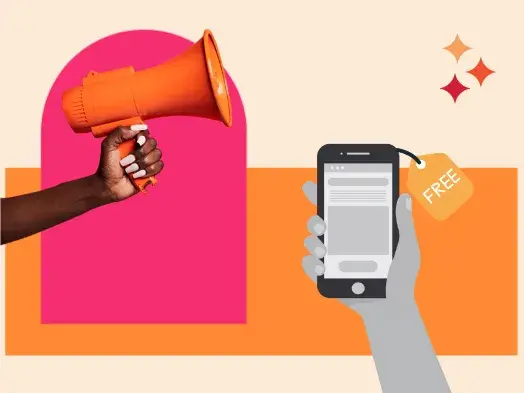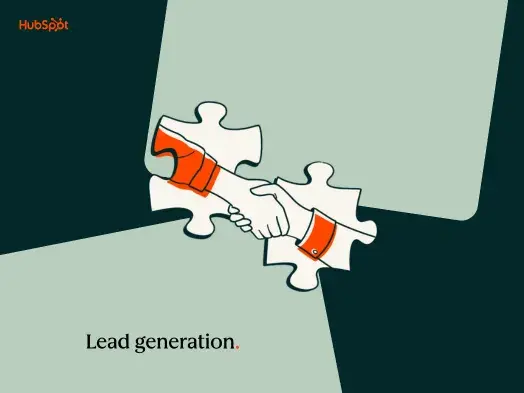 While it's a great place to start, content creation shouldn't be limited to your business blog. We talk a lot about how important offers are to the lead generation process, but let's face it, creating an offer worthy of a form completion is no easy feat. While it might take a couple of hours to produce a well-written blog post, an ebook takes a lot more time and effort. That said, the reward to all that extra time and effort you put into an ebook does pay off in leads. But how do you begin, and where do you end?
While it's a great place to start, content creation shouldn't be limited to your business blog. We talk a lot about how important offers are to the lead generation process, but let's face it, creating an offer worthy of a form completion is no easy feat. While it might take a couple of hours to produce a well-written blog post, an ebook takes a lot more time and effort. That said, the reward to all that extra time and effort you put into an ebook does pay off in leads. But how do you begin, and where do you end?
13 Tips for Writing & Launching an Ebook
1. Brainstorm & Decide on Your Topic: What to write about is probably the most difficult and important decision you'll have to make during the ebook creation process. To decide, start with a brainstorming session. Ask yourself what your potential audience would want from an ebook. What problems do they face? Take a look at the topics of your top-performing blog posts. Does that spark some ideas? Remember that you're going to be writing long-form content, so make sure you choose something that you can easily write about in more depth. Can you take a topic from one of your more basic blog posts and expand on it? The important thing to remember is that your ebook will be behind a conversion form, so you need to produce something that will make completing that form worth it for your audience.
2. Come Up With a Table of Contents or Detailed Outline: Once you've nailed down your topic, decide on your ebook's structure, whether it's as simple as a table of contents or a more detailed outline. Which sections will make up your ebook? Once you decide how you want to break up the content, writing each chunk of text will seem a lot less daunting.
3. Create the Content: Treat each section of content as an individual blog post. The content within it might end up being longer than a normal blog post, but working on your ebook section by section will make content creation a lot more manageable. Stay focused, and make sure each section appropriately ties into the overall topic of the ebook. Include data and statistics when you can to back up your points. Make it clear, easy, and enjoyable to read.
4. Format the Design: Brand it! There is no set way to do this, but if this is your first ebook, you might want to come up with a template you can use for all future ebooks. Be consistent with font sizes and colors, and keep them aligned with the personality of your brand. Add your company's logo to the corner of each page so people reading it are reminded of who it's from.
5. Incorporate Images, Screenshots, Charts/Graphs, Etc: 20-30+ pages of text can look daunting to your readers. Add images, screenshots, and charts/graphs when applicable to the pages of your ebook to break up the text and make it easier to read.
6. Add Links & CTAs to Additional Resources: Within sections and/or at the end of each section and the ebook as a whole, include links and calls-to-action to other content you've created. For maximum lead generation benefit, try to include links to landing pages to encourage further conversion opportunities, such as other top-of-the-funnel offers like another ebook, webinar, or download; or middle-of-the-funnel offers like free product trials, demos, consultations, etc. Consider adding tracking tokens to links so you can better track your ebook's performance.
7. Add Social Sharing Links: Give your ebook more reach by adding social sharing links (e.g. "Tweet This," "Share on Facebook," etc.) to each page. These links should direct people to the landing page for your ebook so they can convert into leads, too. This will enable your readers to easily share your ebook with their social networks and expand the distribution of your content, resulting in more leads.
8. Give it a Name: Follow guidelines similar to choosing a title for a blog post. The title should clearly indicate the content of your ebook and how readers will benefit from it, and it should also be interesting and engaging without being too lengthy. Try to incorporate relevant keywords for SEO. Some examples of titles for recent ebooks we've published are "The Essential Step-by-Step Guide to Internet Marketing" and "How to Monitor Social Media in 10 Minutes a Day."
9. Edit, and Have Someone Else Proof, Too: Don't forget this often overlooked step. Carefully edit and proof your writing to make it clear and concise, and have a grammar-minded colleague scour it, too. A typo-ridden or grammatically incorrect ebook will seriously undermine its credibility as a trustworthy resource.
10. Create the Landing Page: Once the content is ready for promotion, it's time to create the landing page. A good landing page should include the following: the ebook's title, a brief description of the benefit(s) to reading it (e.g. bulleted takeaways), an image (e.g. a screenshot of the cover page with an image), social sharing links, and most importantly, a conversion form with a call-to-action to download. Without a conversion form, it'd be hard to generate leads from your ebook!
11. Promote With Email & Social Media: Once your landing page is complete and tested, launch your ebook! Use email and your social media presence to share the link to the landing page. Write a blog post -- or two -- about your new ebook that includes a call-to-action to download it. These blog posts could consist of a summary of what the ebook is about or an excerpt, such as a section of the ebook. Create CTA buttons that link to your ebook's landing page, and add them to various pages of your website.
12. Collect Your Leads & Measure Results: Track the performance of your ebook. How many leads did it generate? What was the landing page's conversion rate? What have you learned from the process that can be applied to the creation and launch of future ebooks?
13. Link to the Ebook in Other Content & Use in Evergreen Promotion: Don't let your ebook fade away after its initial launch, especially if it's a well-performing offer. Link to your ebook in other content such as blog articles or other ebooks, and create CTAs for your ebook that can be used at the bottom of blog posts or on pages of your website. Share your ebook as part of other evergreen promotion efforts.
Check out some of HubSpot's ebooks for examples. What other tips for creating ebooks can you share?
Image Credit: Andrew Mason
Lead Generation

![What is a lead magnet? 20 lead magnet ideas and examples [+ step-by-step]](https://53.fs1.hubspotusercontent-na1.net/hubfs/53/lead%20magnet%20represented%20by%20a%20magnet.webp)




![Gated Content: What Marketers Need to Know [+ Examples]](https://53.fs1.hubspotusercontent-na1.net/hubfs/53/UNGated%20Content.png)

![What Is Demand Generation? Here’s How You Can Create Buzz for Your Offering [FAQs]](https://53.fs1.hubspotusercontent-na1.net/hubfs/53/demand-generation-1-20250321-225687.webp)

